‘Inspiration’ is what leads us to create with passion. We want to share the thrill of a brilliant sunset, the innocent smile of a young child or that lovely fading rose. When we’re inspired, we can imagine the perfect colours, fabrics and stitches we’ll use, and then dive right into the making process.
But unfortunately, there are times when inspiration eludes us. We stare at a blank piece of linen just as the writer stares at a blank sheet of paper wondering where to begin? What story am I trying to tell? Where’s the excitement? It’s artistically painful when nothing stirs our soul to eagerly pick up a needle and thread.
Be assured, textile artists of all abilities face these vacant moments, including UK artist Sue Stone. However, Sue relies upon her art school education, where she was taught to truly look at her surroundings for inspiration. We’re not talking about cursory glances or simply noticing the obvious. Sue looks up, down, around and in every other direction possible to discover what’s often overlooked. She purposely seeks the details, textures and patterns that surround her, and then combines that information to create her inventive settings.
Sue also documents what she sees by always having a camera to hand when she’s out and about. Over the years, Sue has literally snapped hundreds of images for both current and future inspiration. Nothing is off limits, from peeling paint to sidewalk cracks to crumbling cobblestones. Graffiti and street signs also inspire with their graphic elements and colours.
Sue’s family photo albums are another key source of artistic inspiration. Beloved ancestors call out to her, but she also enjoys sending an album’s unknown women and men on incredible journeys. She combines fact and fiction to create connections between the past and present in remarkable ways.
Sue will tell you her work may not always be about what you think you see. And this peek into her key sources of inspiration will show you how and why that’s indeed the case.
A peek inside the family album
Sue Stone: People are an ever-fascinating subject for me, and I’m a storyteller at heart when it comes to my textile art. Every piece I make bears a tale, whether it’s my mum’s life story in Portrait of a Grimsby Girl or my own self-portraits. Even my New York travelogues were inspired by the backstory of a family gathering.
Overall, my work is more illustrative than realistic, and I strive to capture my subjects’ characters and personalities versus their exact likeness. My characters also usually confront the audience face on, looking out and inviting a conversation between viewer and maker.
My number one source for inspiration is the family album. Every time I study its pages, I’m reminded of the passing of time and the transience of life. My mum, dad, grandparents, sister, husband and children have all been featured in my work.
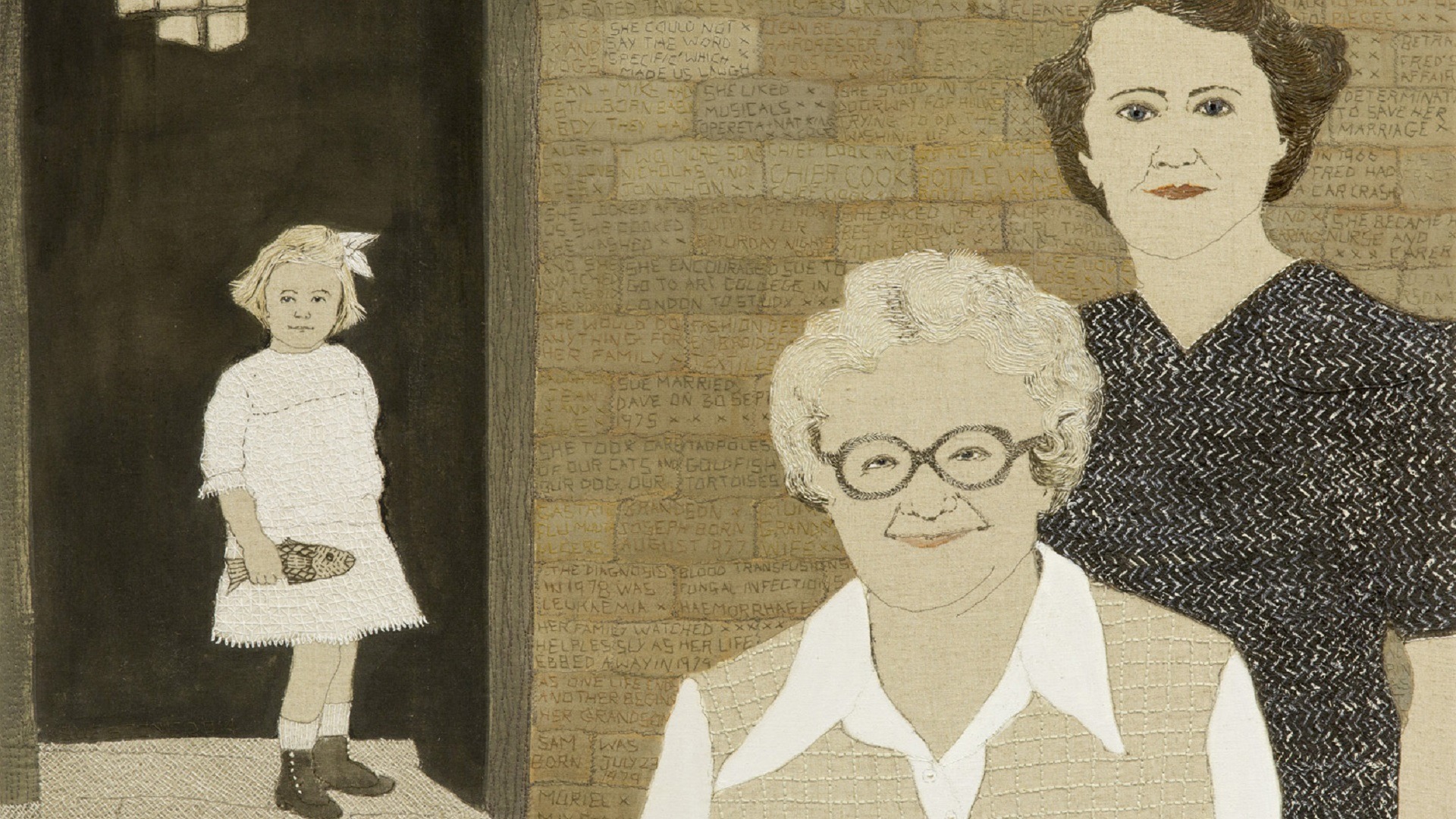
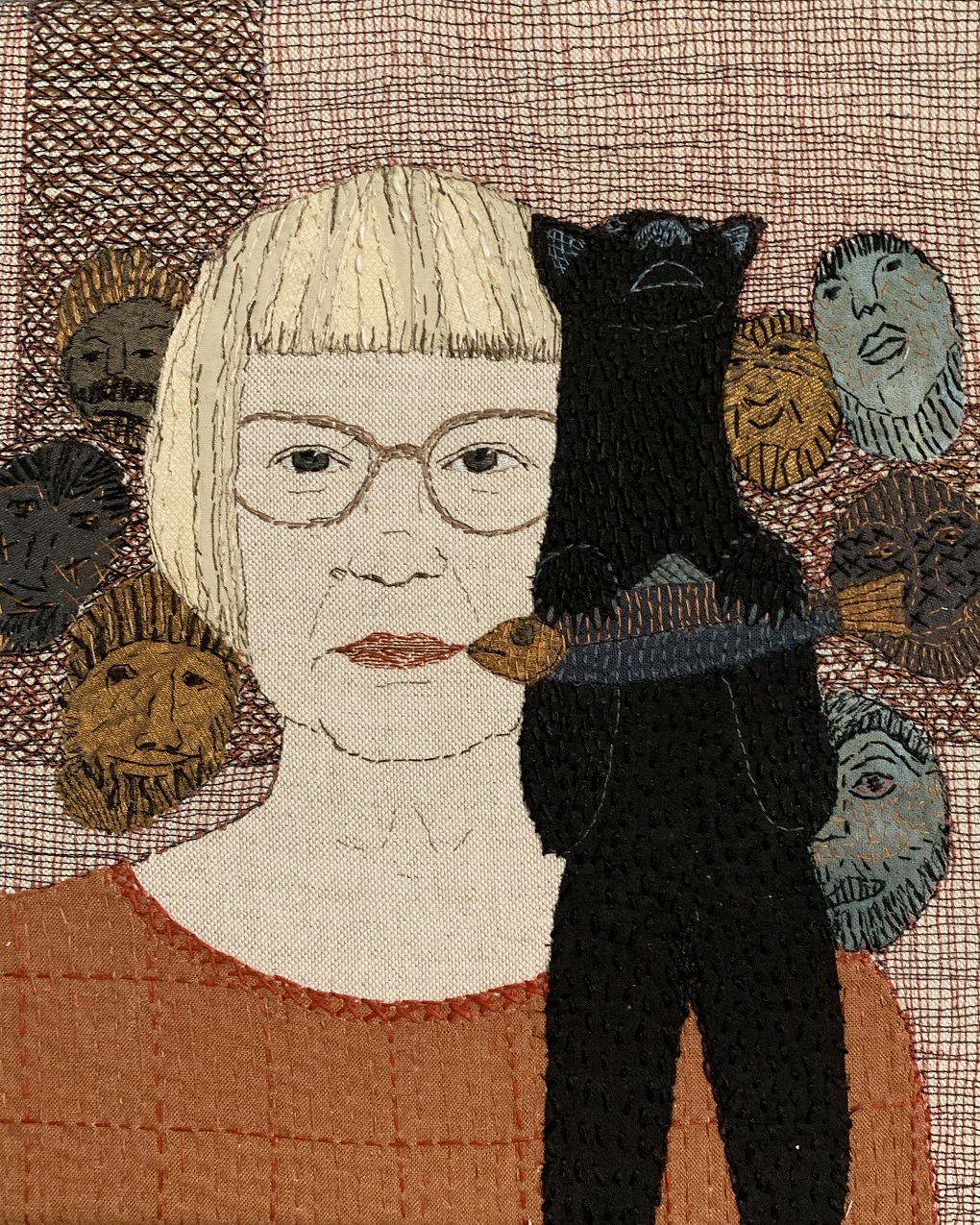
Working with the family album is also a way for me to remember who I am and where I came from. To that end, many of my works juxtapose disparate images from the past with those from the present to make a connection among people, place and time. By presenting two specific points in time, I create the illusion of time travel that asks the viewer to imagine what happened in between.
Inspiration for a new work can come from any aspect of an old photograph, including the composition of the snap itself or the character of its subject within. But I’m especially intrigued by photos featuring unknown characters. I think everyone’s family album houses photos of people whom no one seems to know.
The photographs I like best are the small, faded sepia or black-and-white photos that offer very little information. Those snaps give me an opportunity to use my imagination to craft partial narratives that allow viewers to draw their own conclusions.
Anonymous photos are also a great device to portray the past and key historical events. For example, Another Time, Another Place is a surreal and ambiguous composition about inequality during times when women had no right to vote.
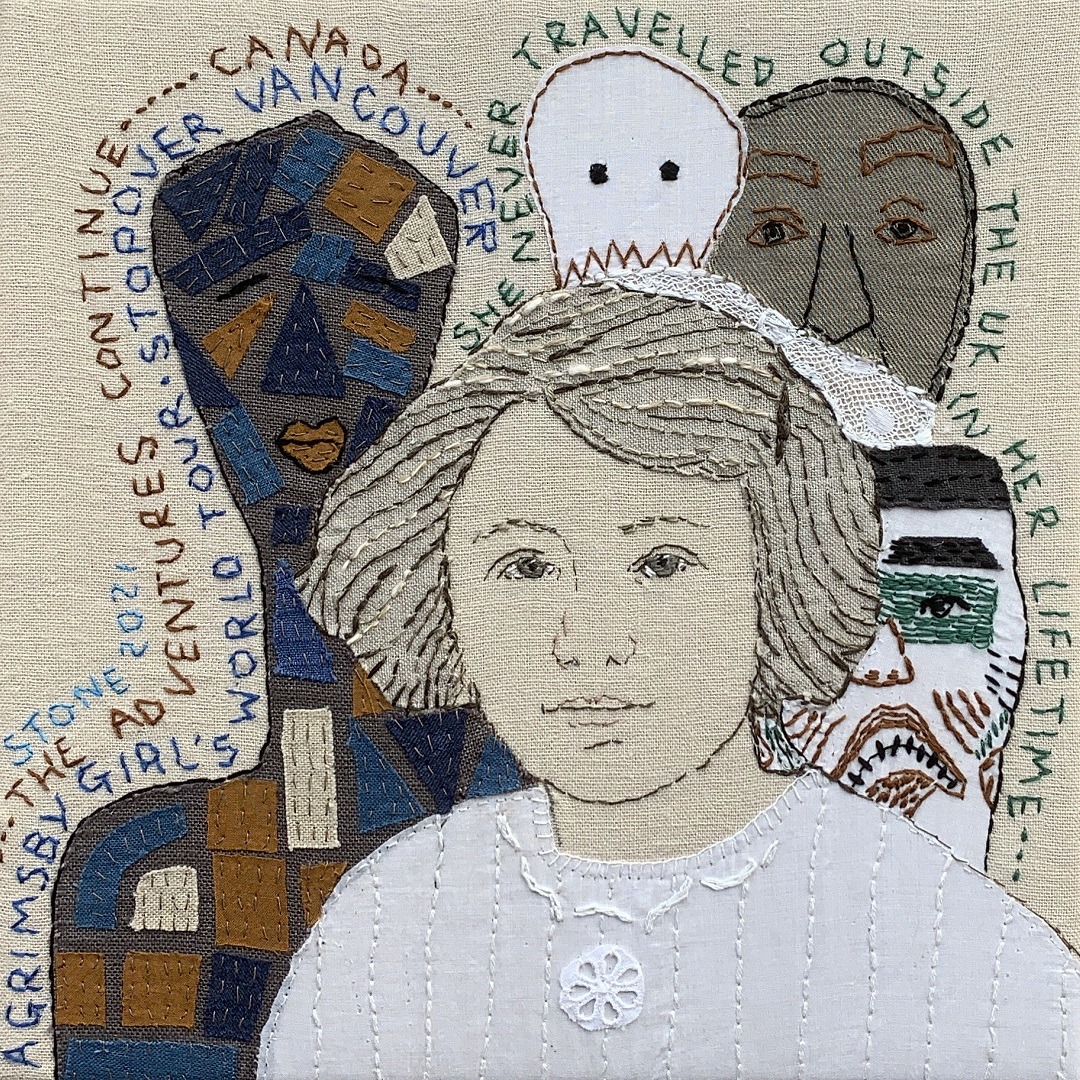
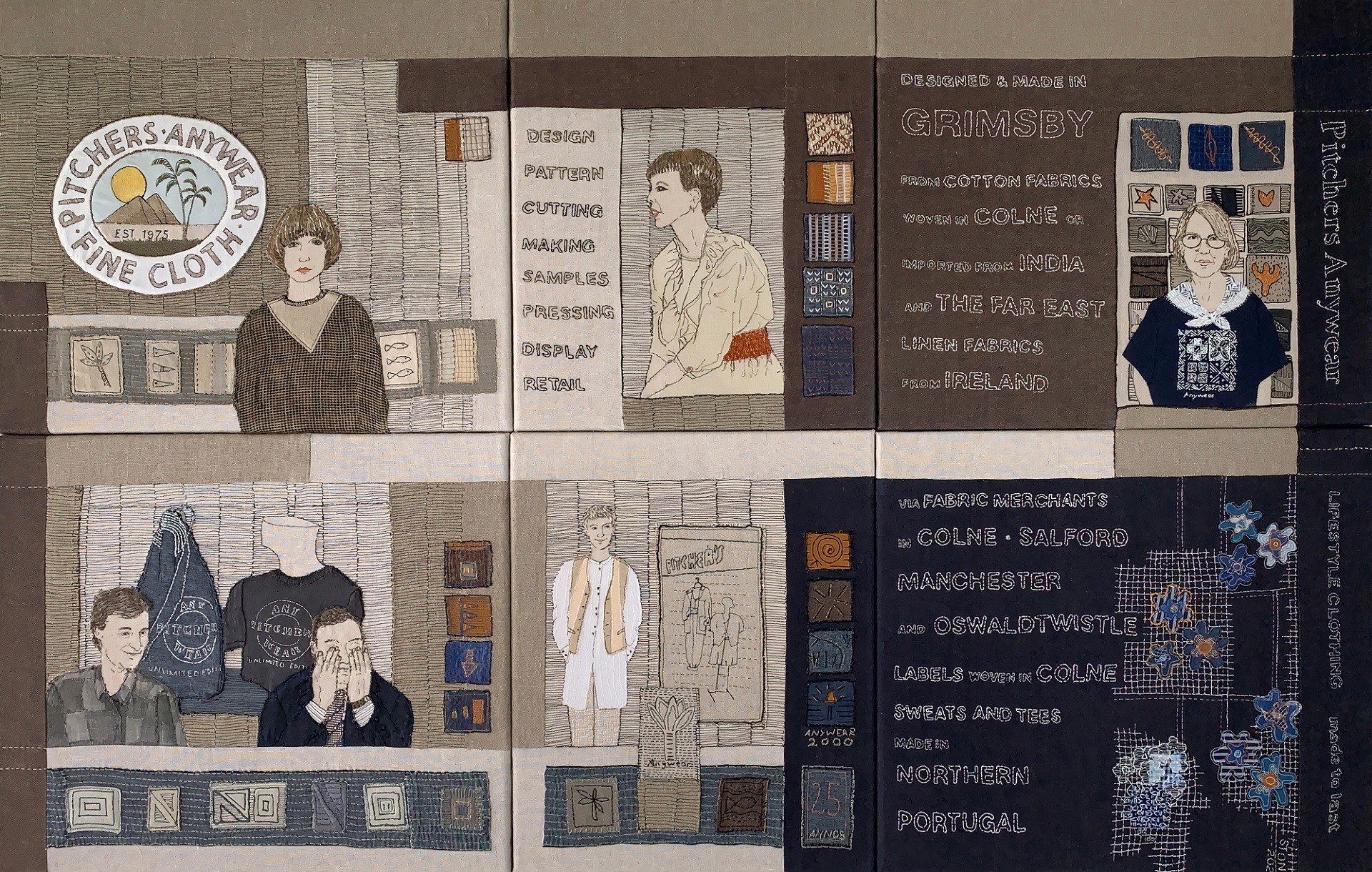
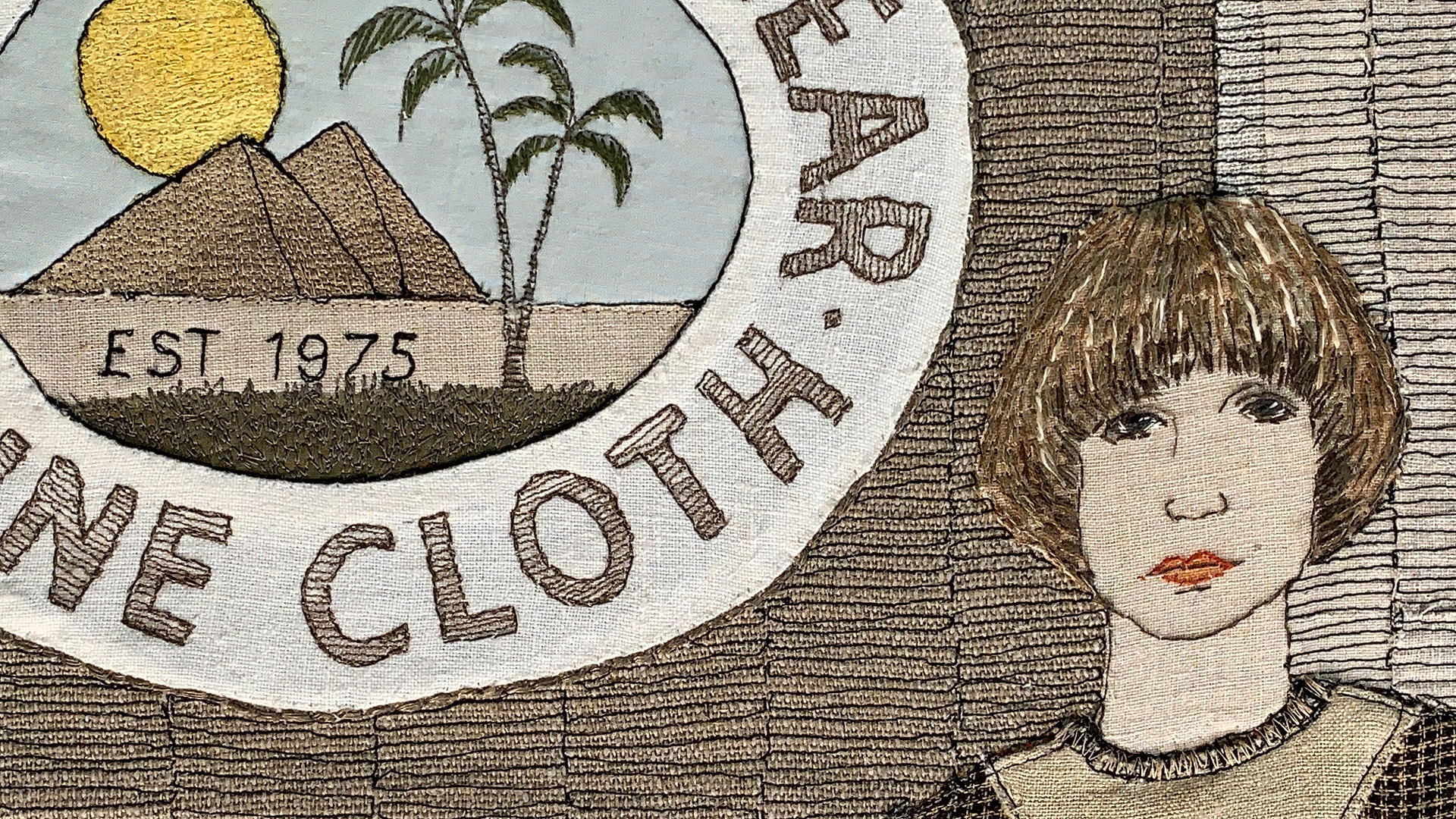
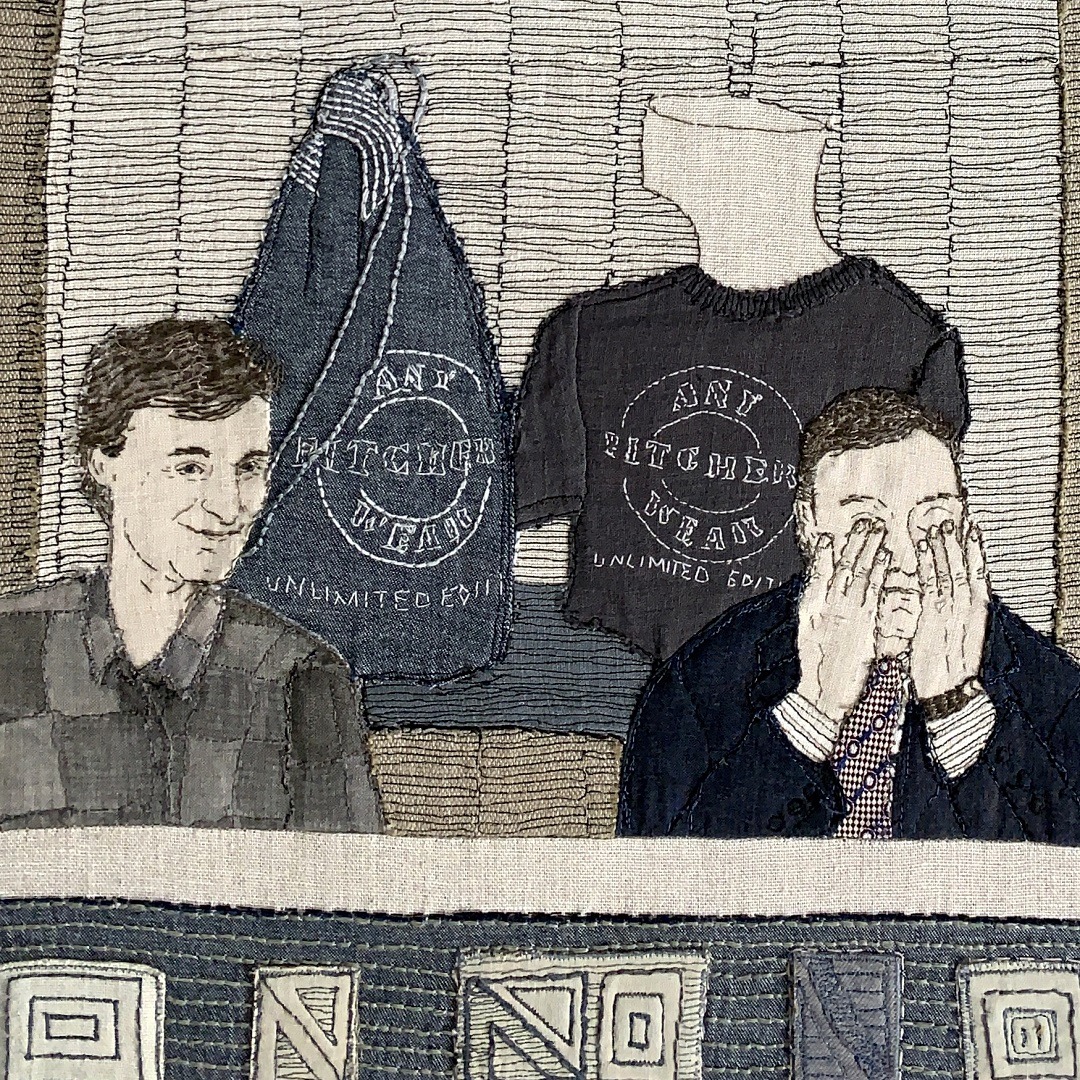
Journeys: real and imagined
Journeys and places also inspire my work. Fact and fiction are interwoven through many of my pieces, but they’re all about solving mental dilemmas.
My imagined journeys are often triggered by something I’ve seen or heard, and then the concept develops as a journey of thought. That part of the journey often takes a very long time. The journey eventually resolves and concludes during the actual making process, and then it’s on to working out my next mental dilemma with another journey!
The first work in which I merged reality and fiction was East End Chair (2007). I combined different images in a slightly surreal way, and it was the first piece in which I used graffiti in the background. It’s about the journey of the Grimsby fishing industry, both its demise and subsequent emergence as a modern-era docks operation. My process and subject matter have since evolved, but that particular work opened my mind to the possibilities.
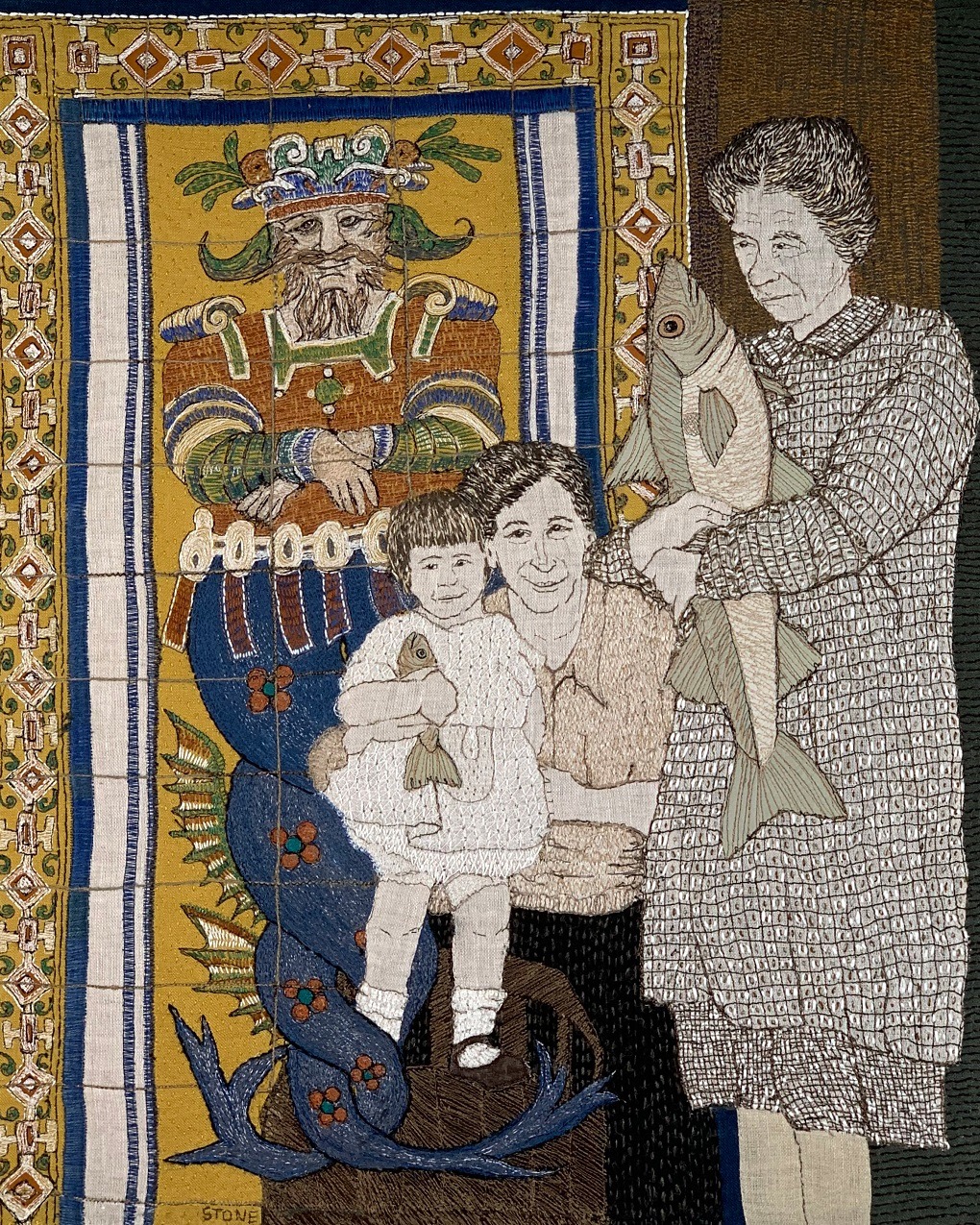
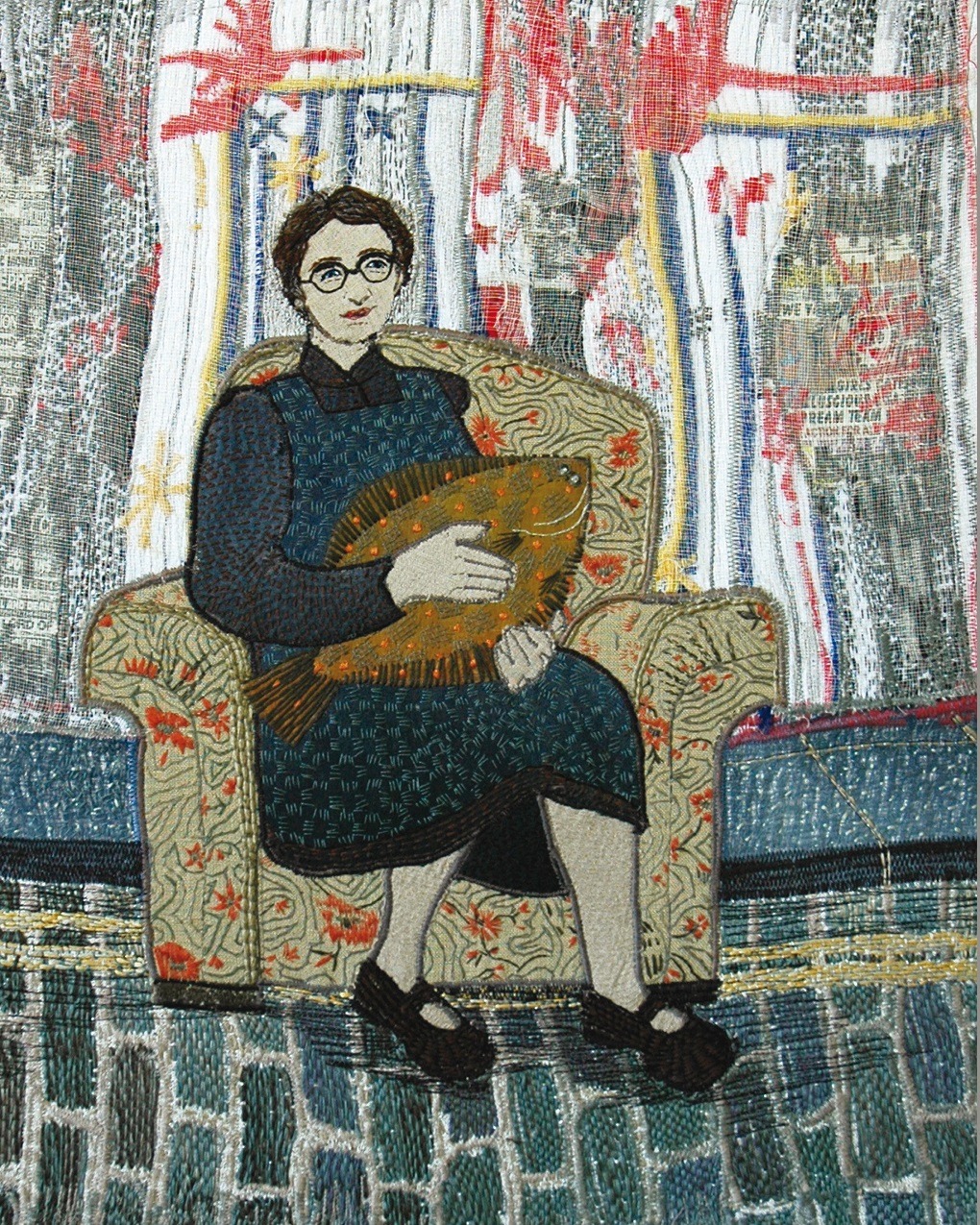
My imagined journeys all have real elements in the background, whether it’s a local Grimsby street scene as in Are We Nearly There Yet?, a background of pictorial tiles from Seville as in Another Place, Another Time, or a combination of images from Copenhagen and Denmark as in A Grimsby Girl’s World Tour – Copenhagen.
The fictional element lies in how I transport people who lived in a different era to those real places. As with my family album, often the people are unknown to me, and I am just asking ‘what if?’.
I also think about our different lived experiences over time. For example, in the Grimsby Girl’s World Tour series, I’m thinking about the lack of opportunity my mum had compared to all the opportunities I’ve had.
And sometimes I like to imagine journeys that present a new opportunity for people I have known. I enjoy giving them a different outcome to their journey through life, such as a new career or new place to be that I think they would have enjoyed.
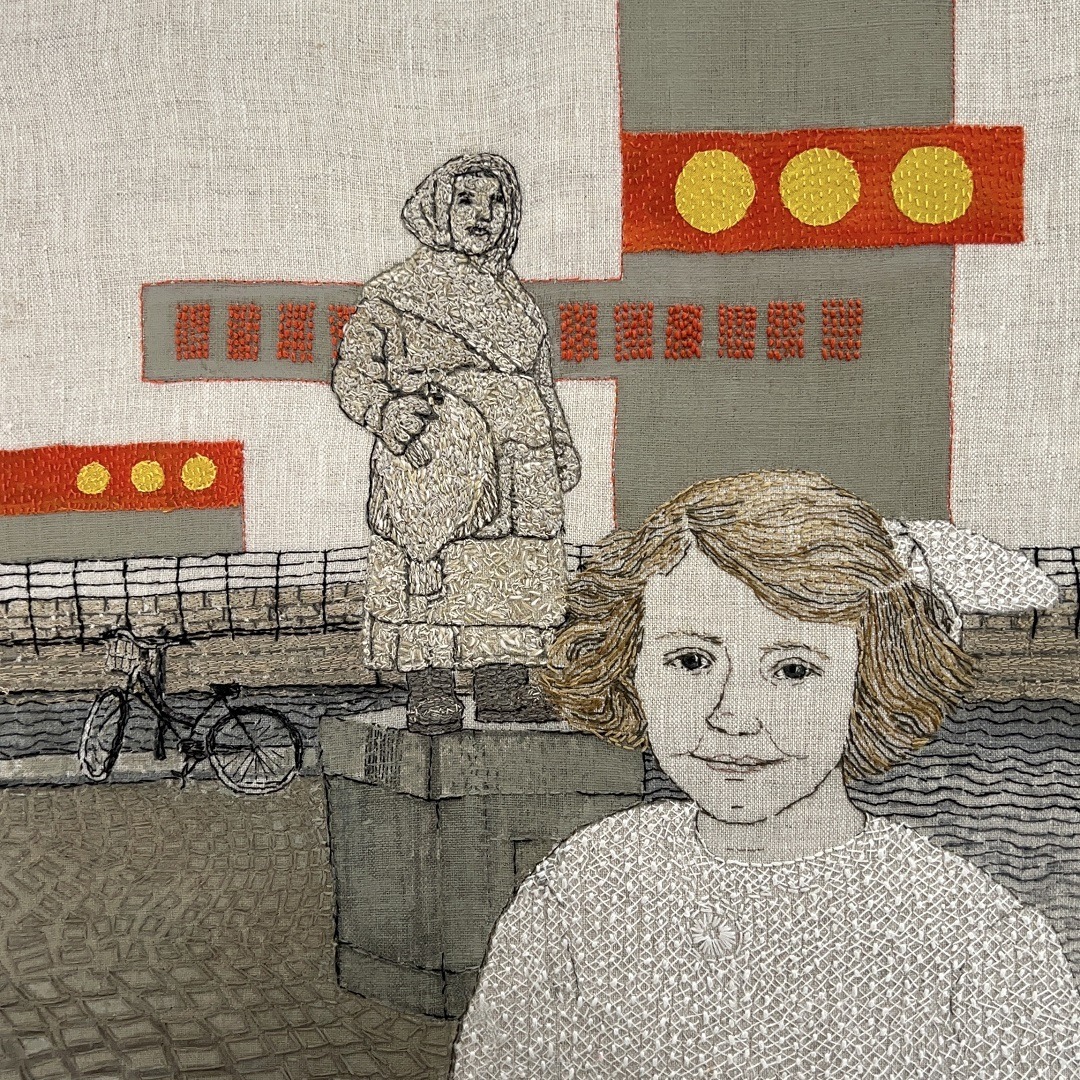
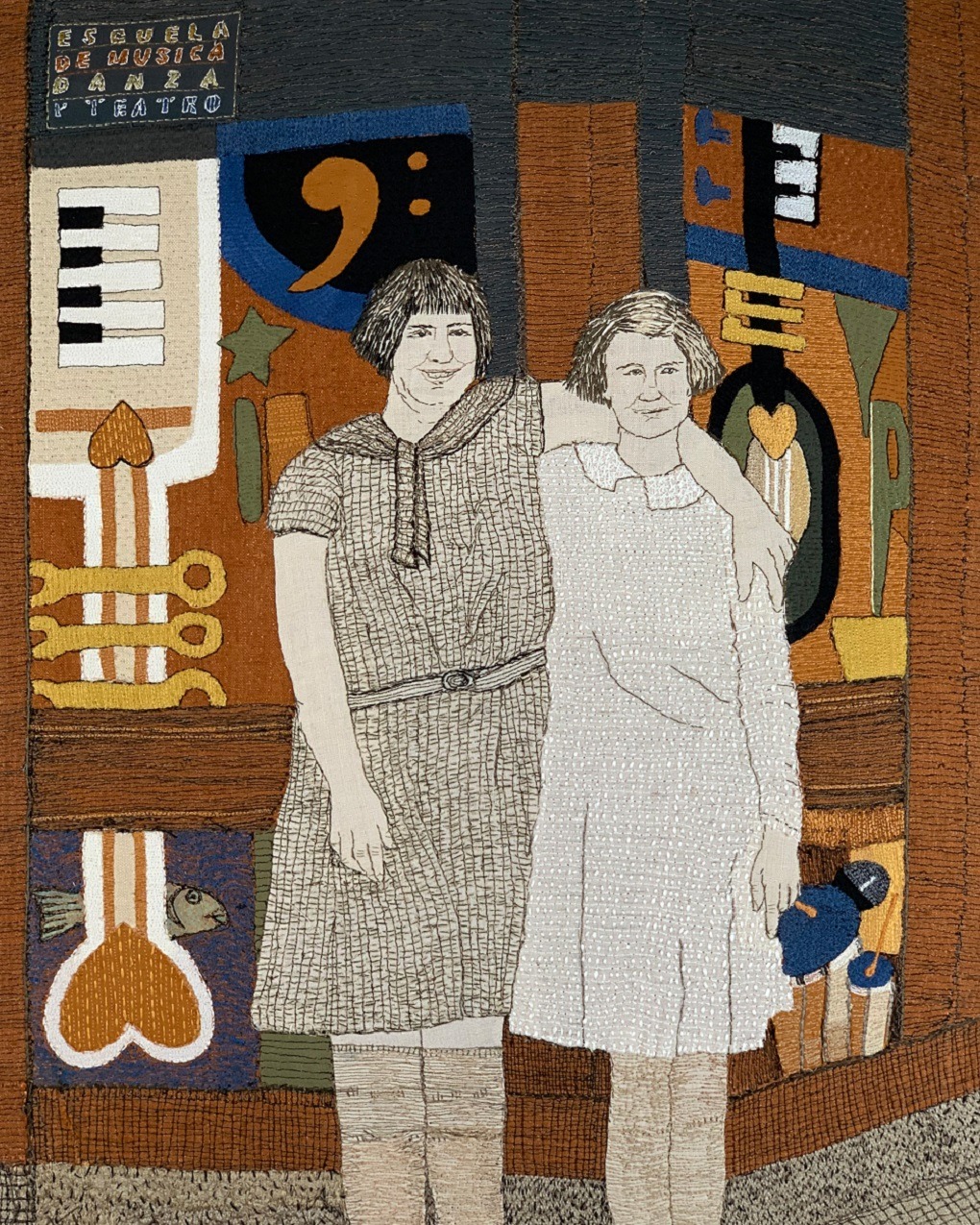
Ironically, I am a reluctant traveller in real life. I really don’t enjoy any kind of travel, be it car, train or plane. But I love being in different places and experiencing new sights and sounds, so I have taught myself to ‘just get through’ the journey. It’s a means to an end.
I constantly ask myself ‘are we there yet?’ just as I did in childhood when my sister and I travelled in the back of my dad’s car filled with smoke from his pipe. That phrase now appears in my work. For example, I used the phrase behind the detail of my son, husband and me on a New York City subway in Brooklyn: Recollection, Return & Repartee. I hated going on the subway.
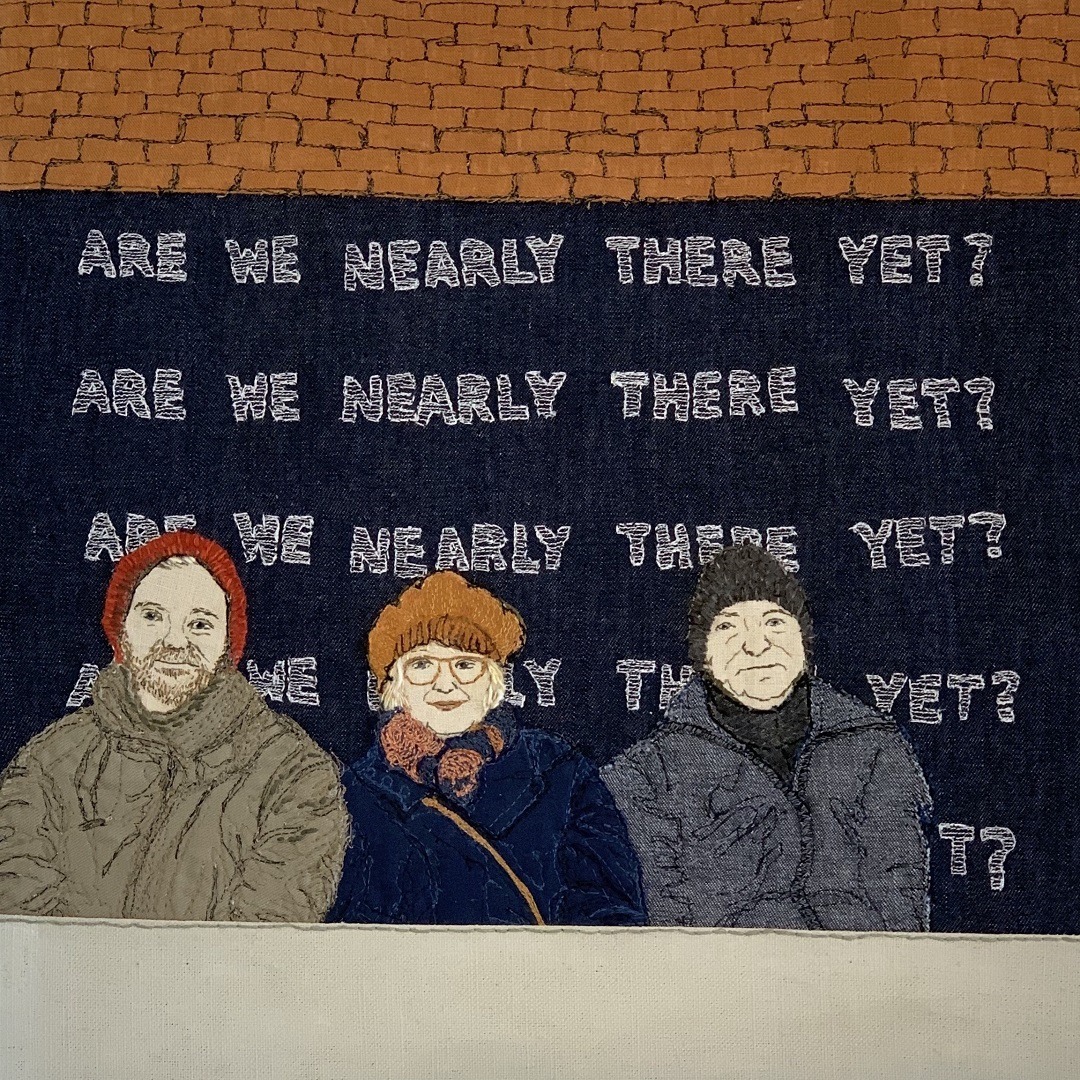
Architectural elements
Another source of inspiration for me are the often overlooked, intimate details I discover when I am out and about. Rather than just enjoying the general landscape, I look up, down and all around for manmade and accidental textures and patterns. Street grates, cobblestones, tiles and other architectural elements are often featured in my work.
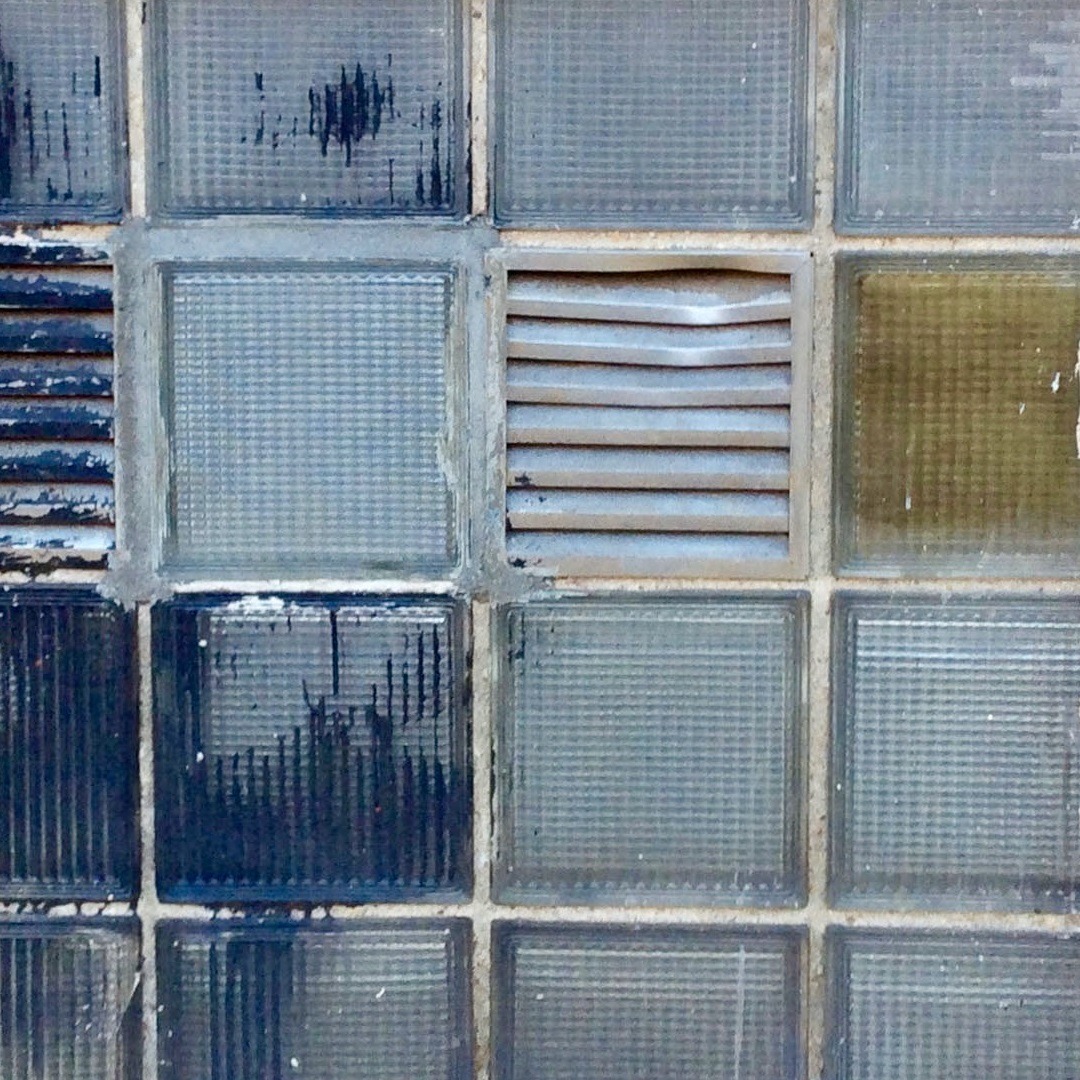
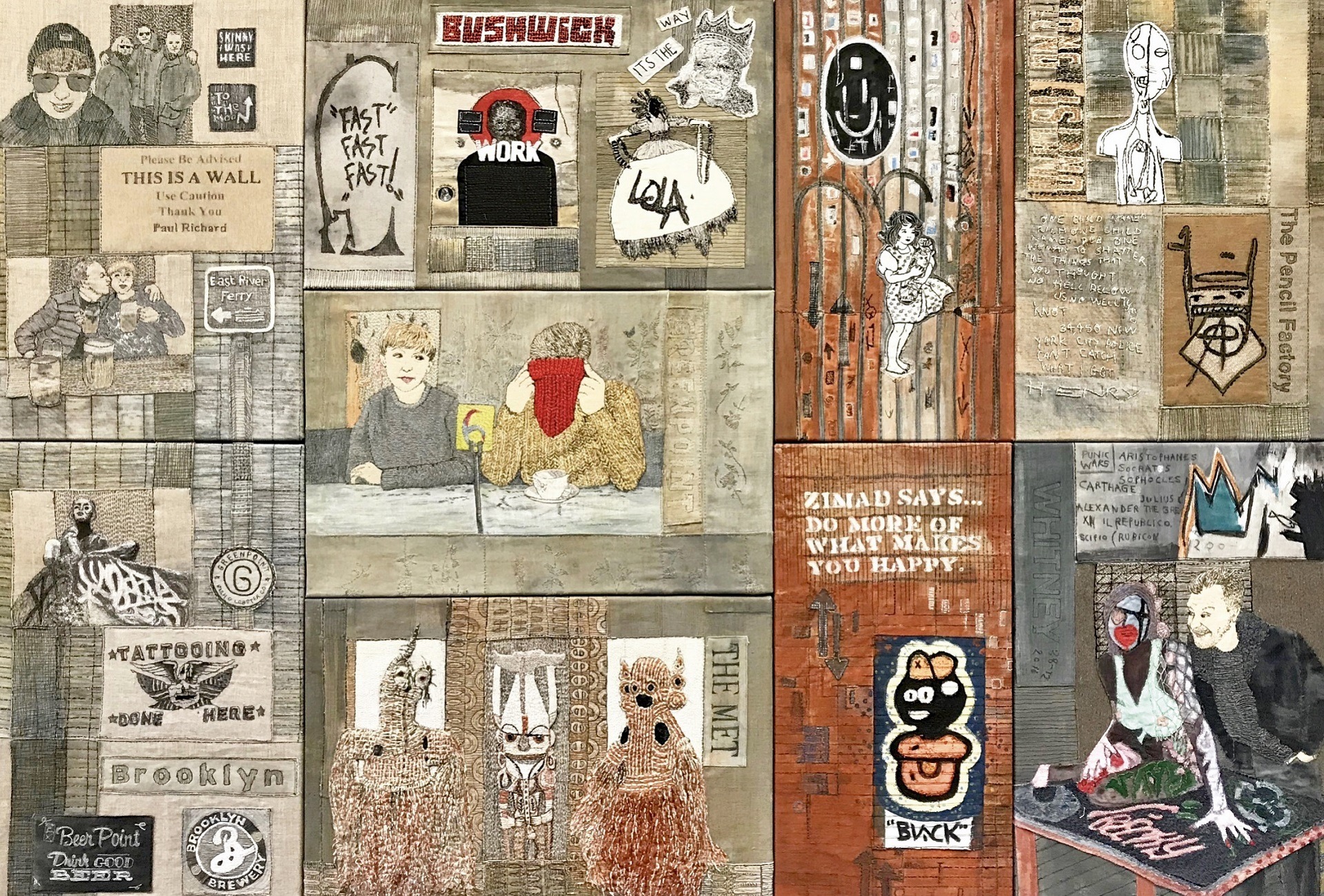
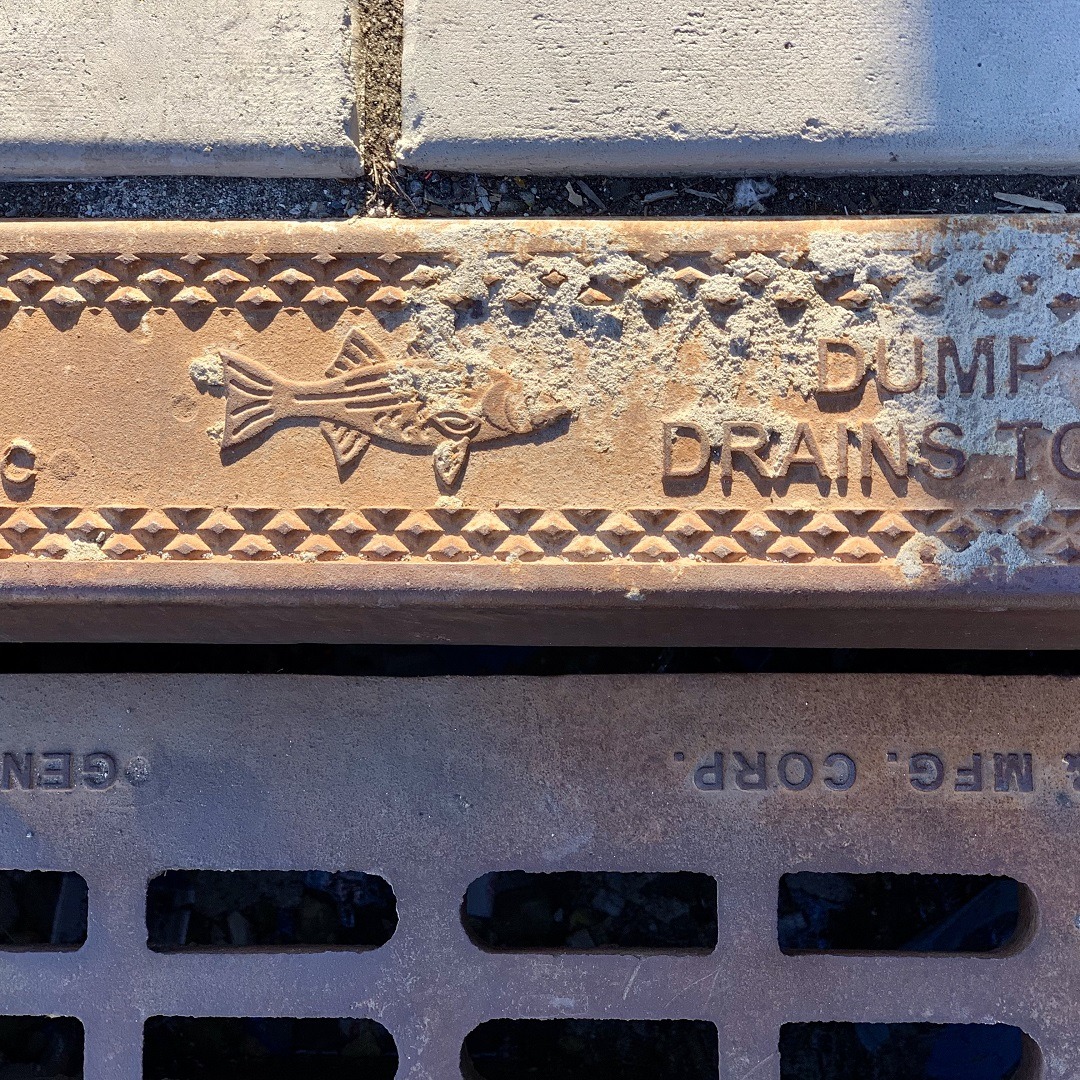
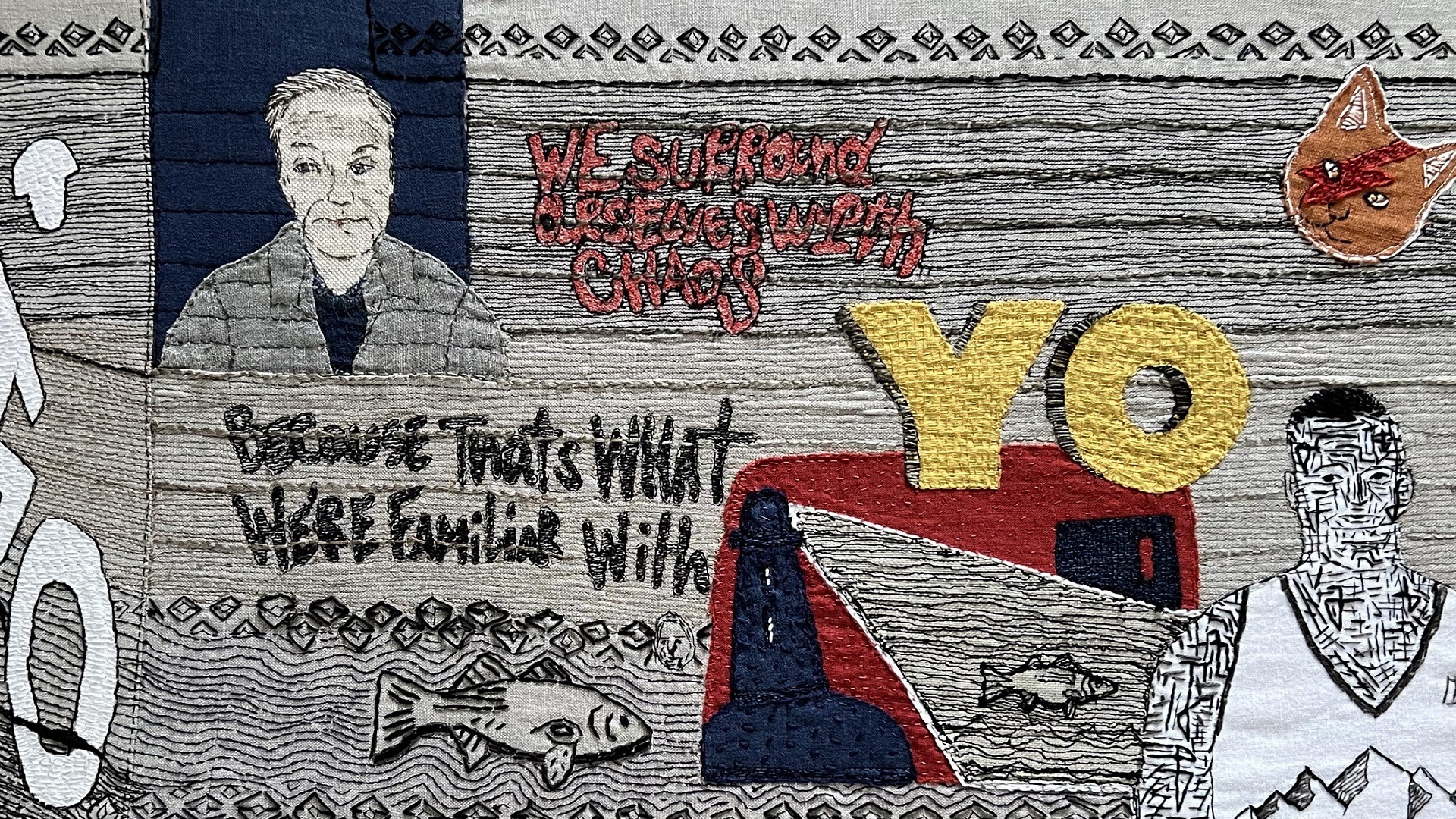
I’m an avid photographer, and I collect hundreds of images as an aide-memoire for my work. I’m particularly fond of walls, as there are so many types of bricks and stones that present beautiful, subtle colour palettes.
I’ve also started to feature more signs in my work. Whether a traditional street name or a sign with directional arrows, I enjoy how different signs’ graphic elements complement my work.
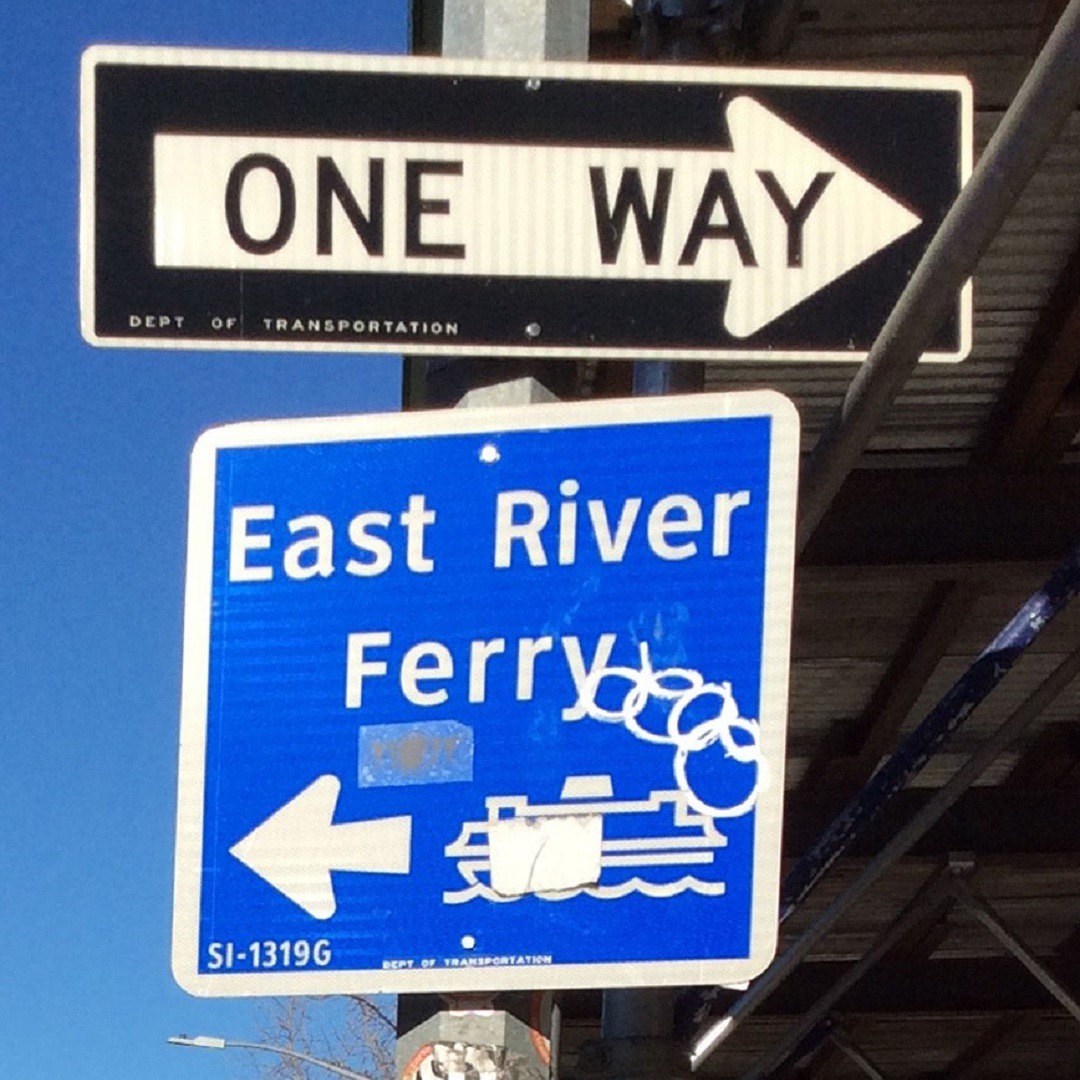
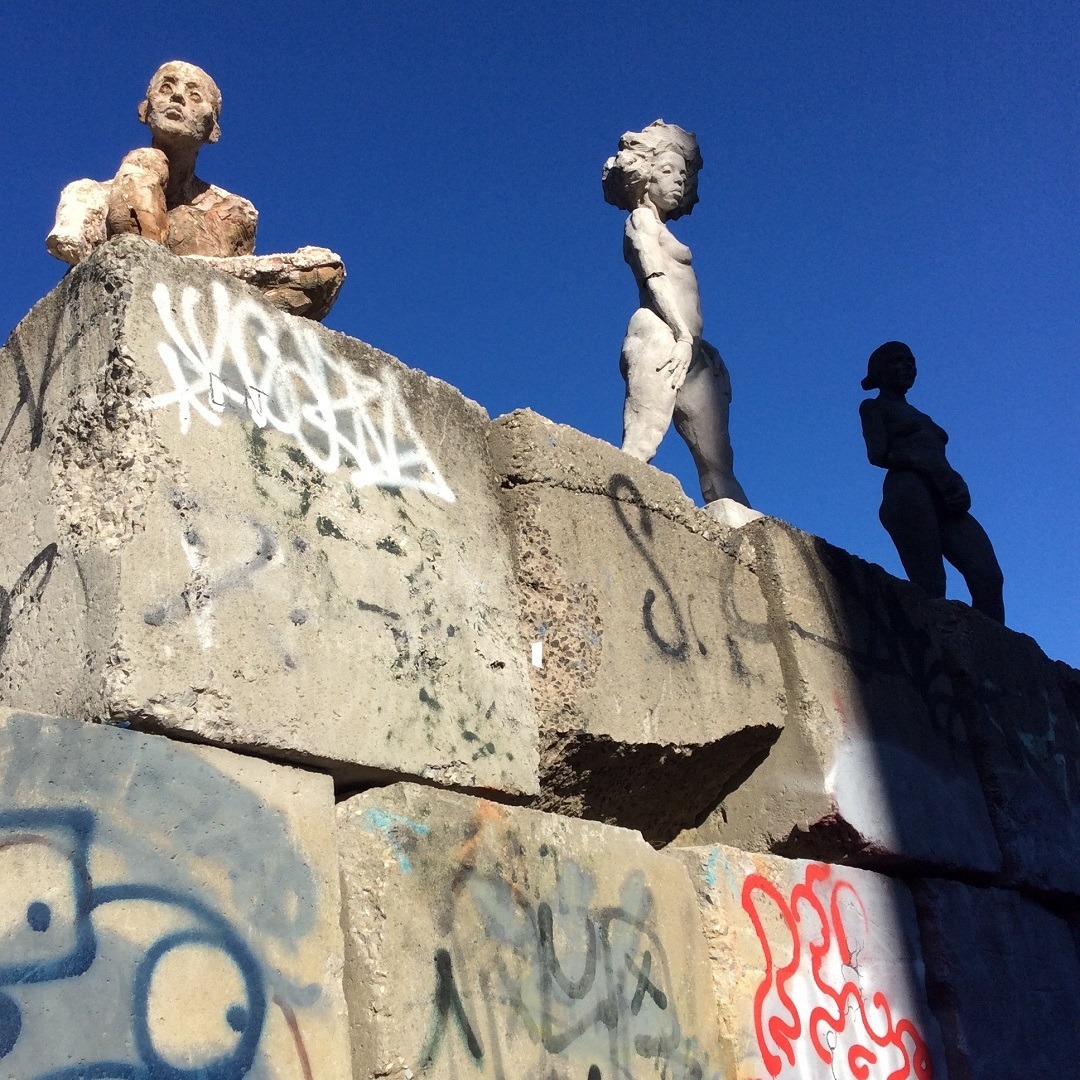
Graffiti love
The street art and graffiti I see on my travels provide a rich source of inspiration, and they’re the perfect complement to the street settings I create for the people who inhabit my work. I like graffiti’s ephemeral nature. It’s here today, gone tomorrow. Or perhaps painted over by another street artist.
I also love graffiti’s bright colours and how it’s created in different forms and sizes. I enjoy large murals and the occasional random sculpture. But I am obsessed with taking photos of the stickers I discover.
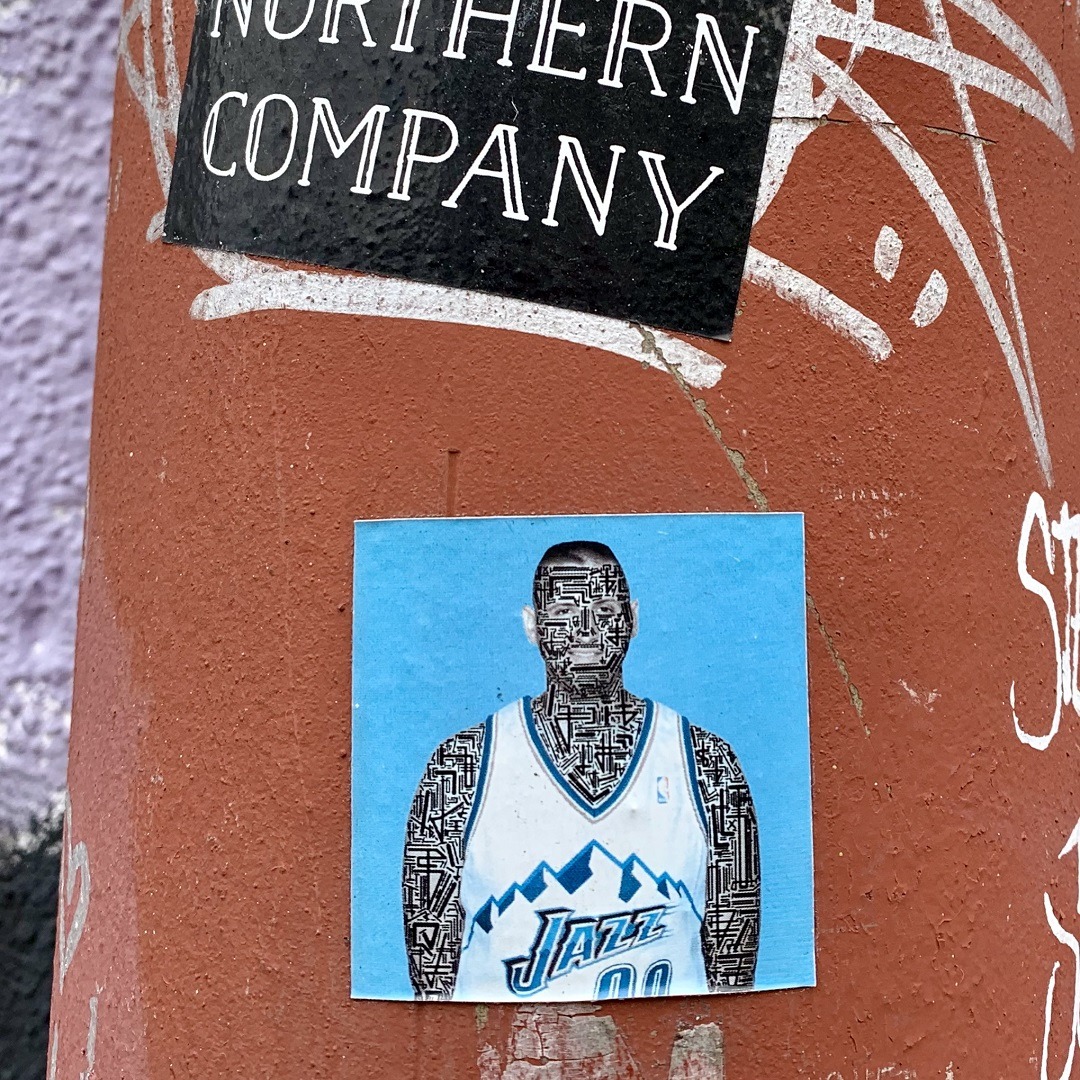
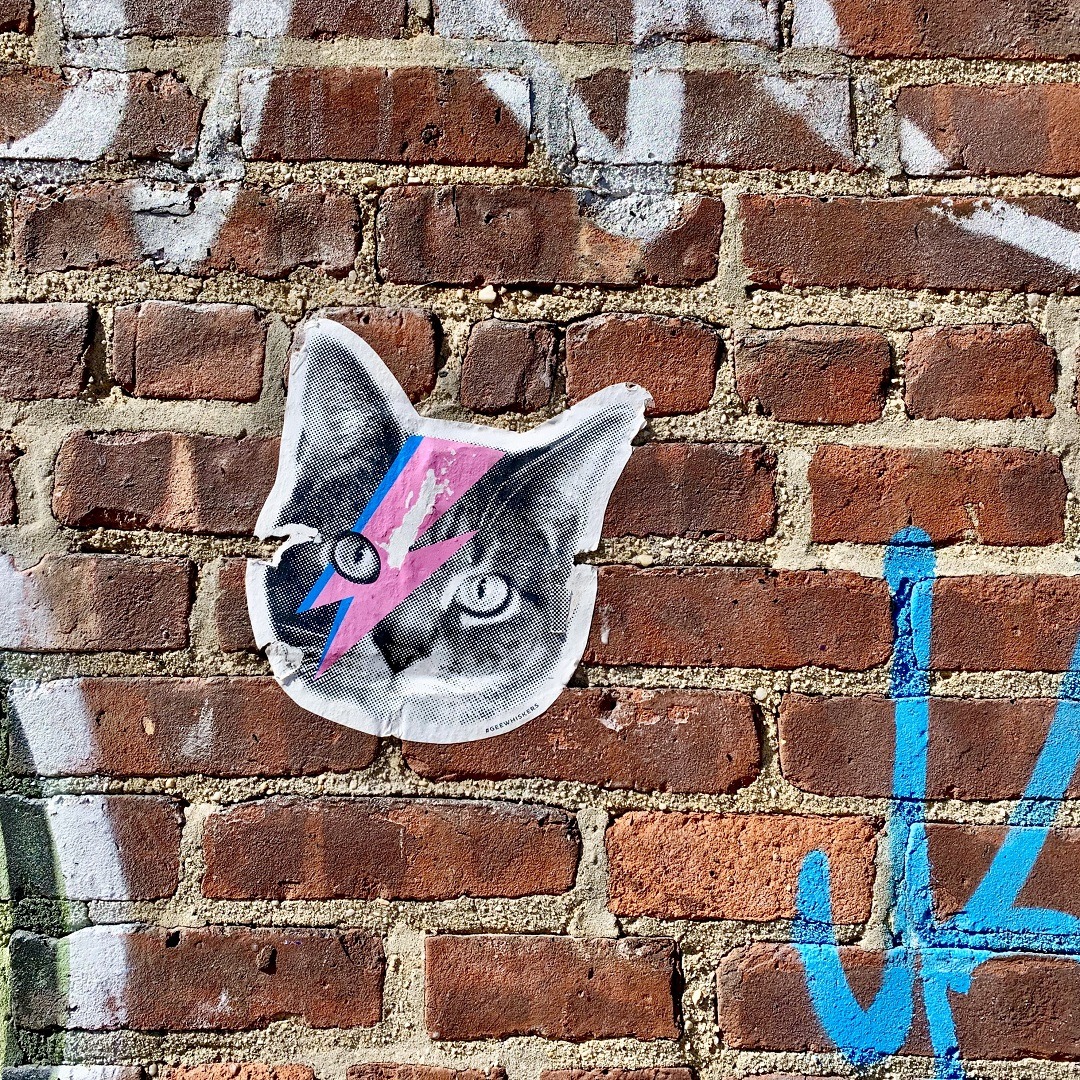
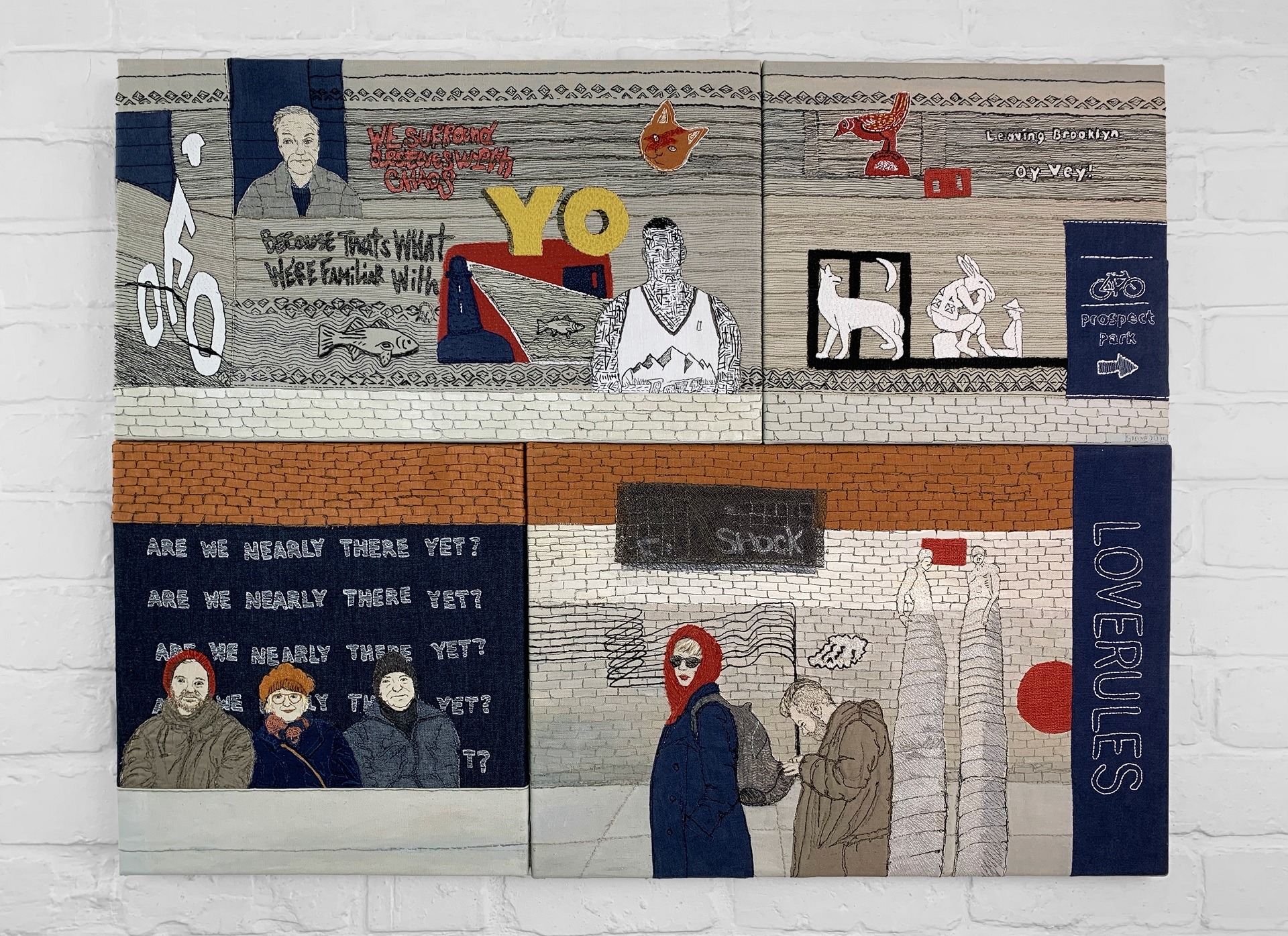
I feature graffiti and street art first and foremost as an homage to the original artist because of the work’s temporary nature. It’s always important to acknowledge the artist whenever possible, so if I can identify an artist, I always include the artist’s tag featured in the art and/or the name of the artist in my artist statement.
The street art in my works is a device to identify the present day, and the vintage images of people I juxtapose with that art represent the past. Both work together to allude to a journey through life, time and imagined treks to far-off places.
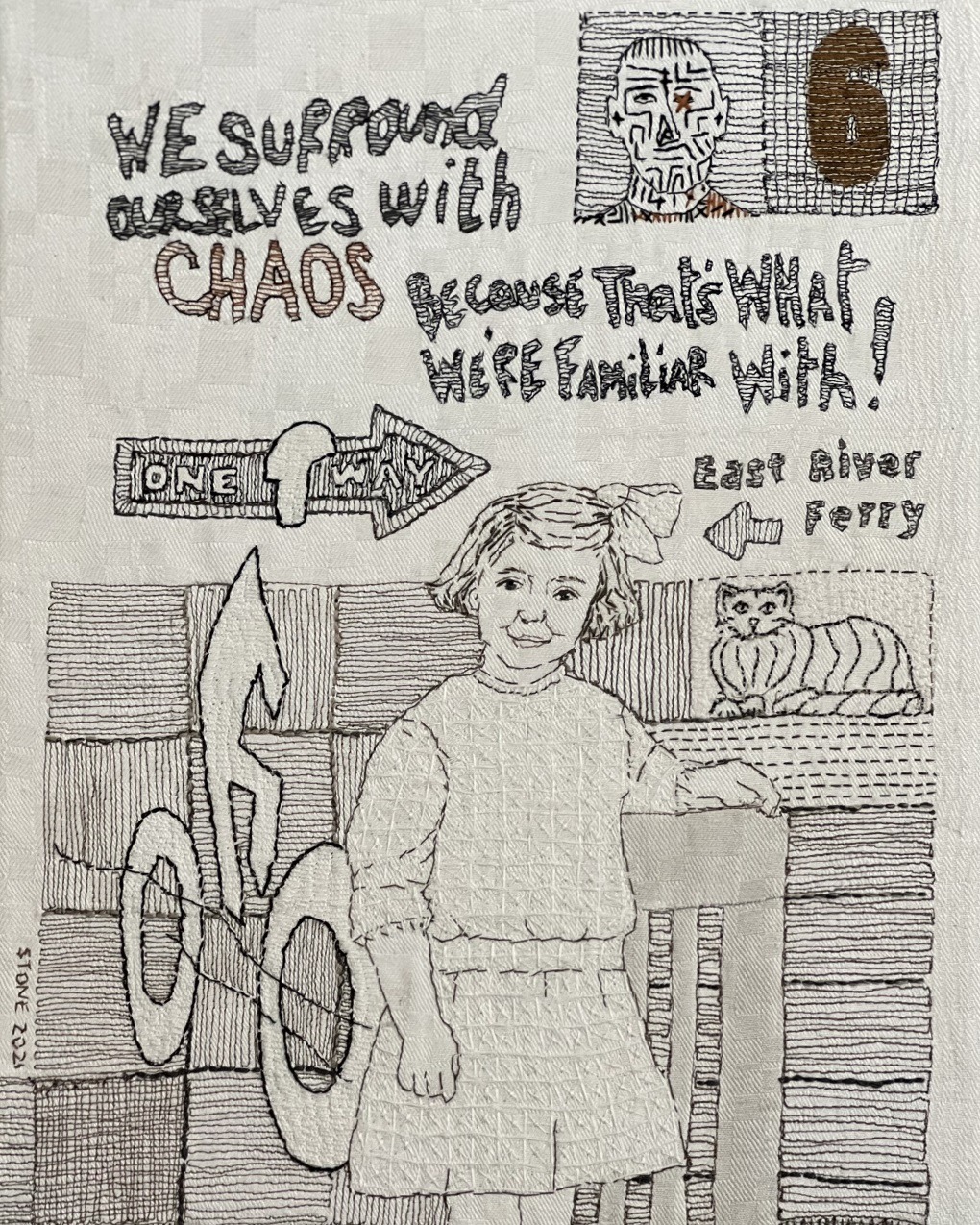
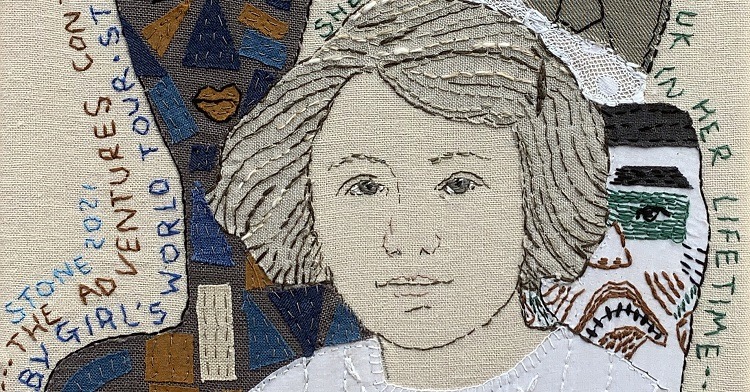
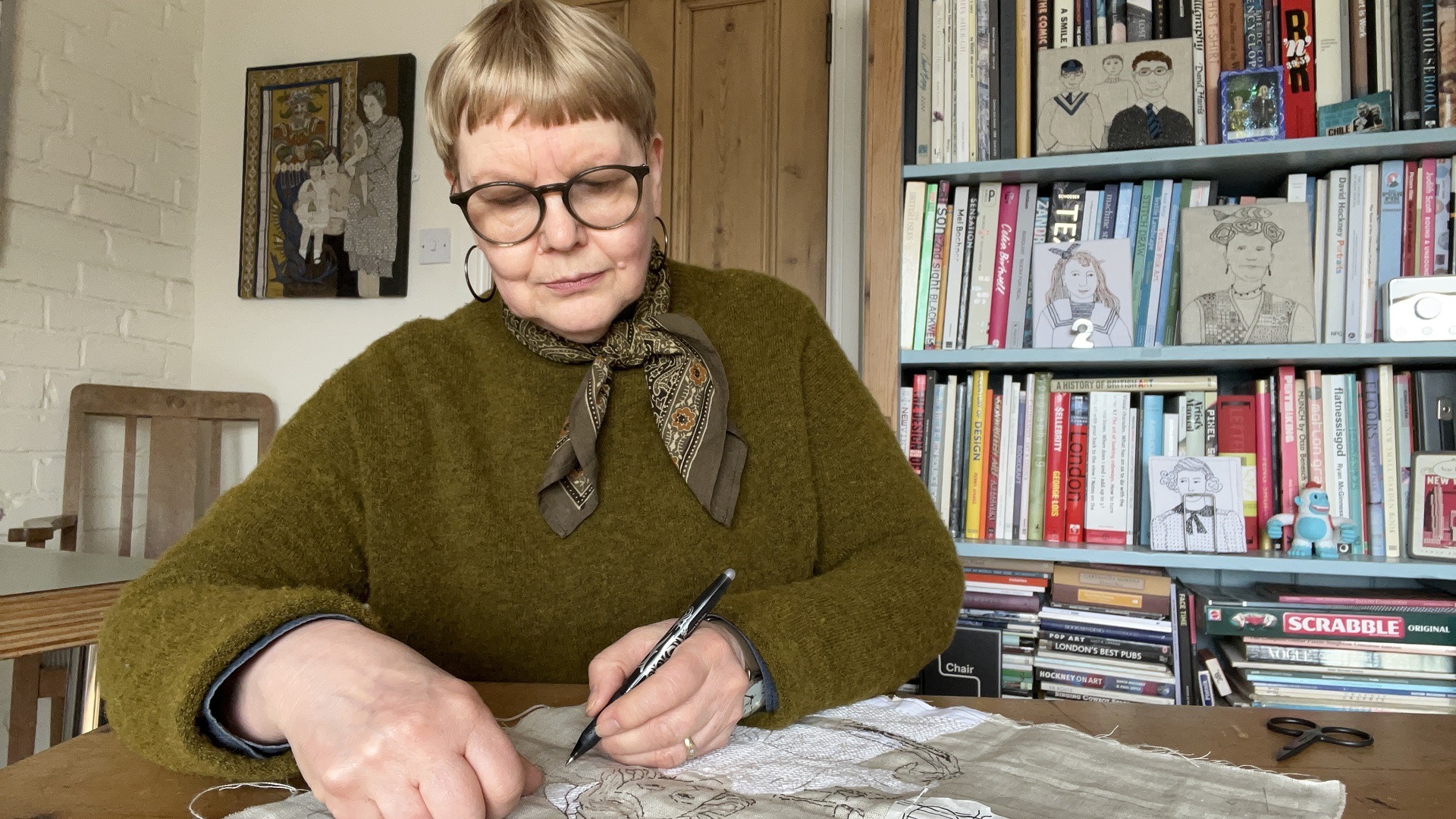
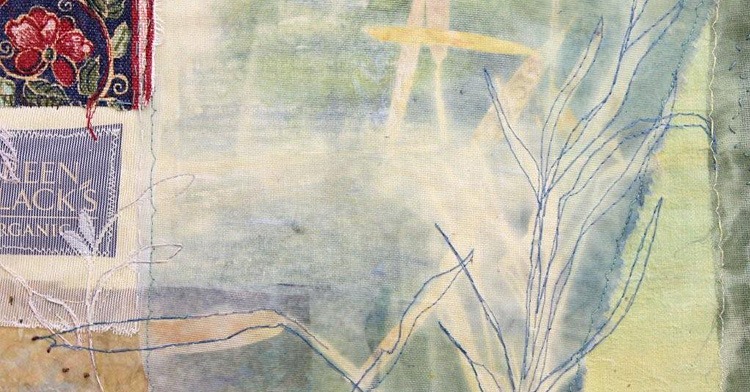
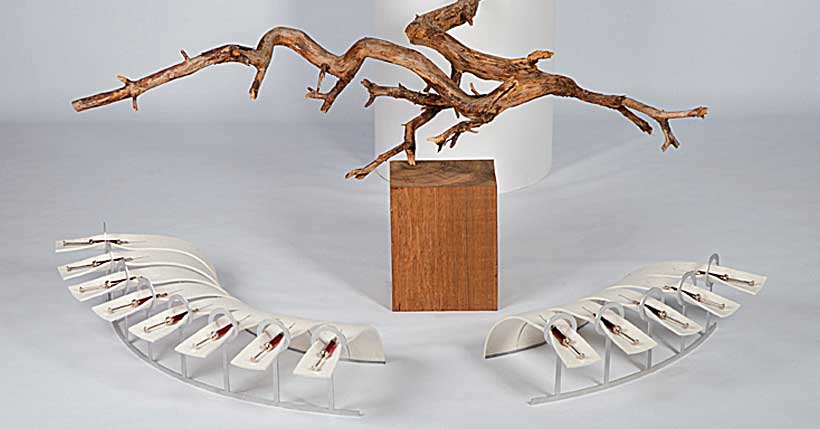
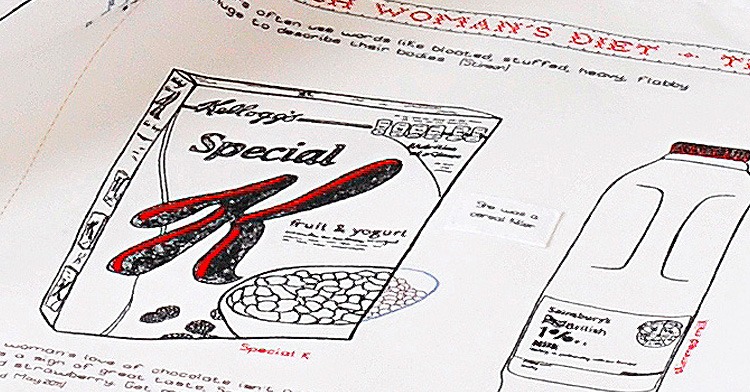
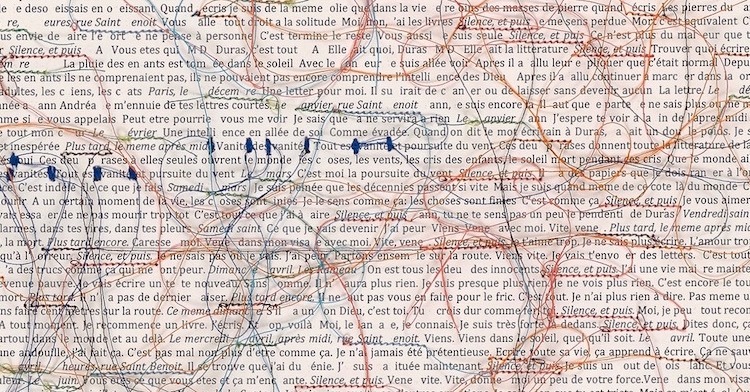
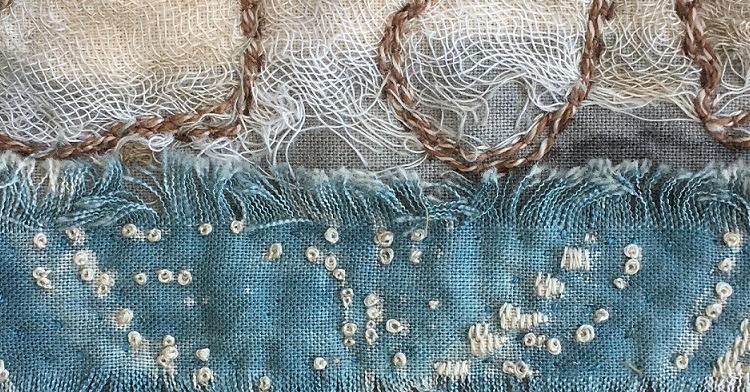
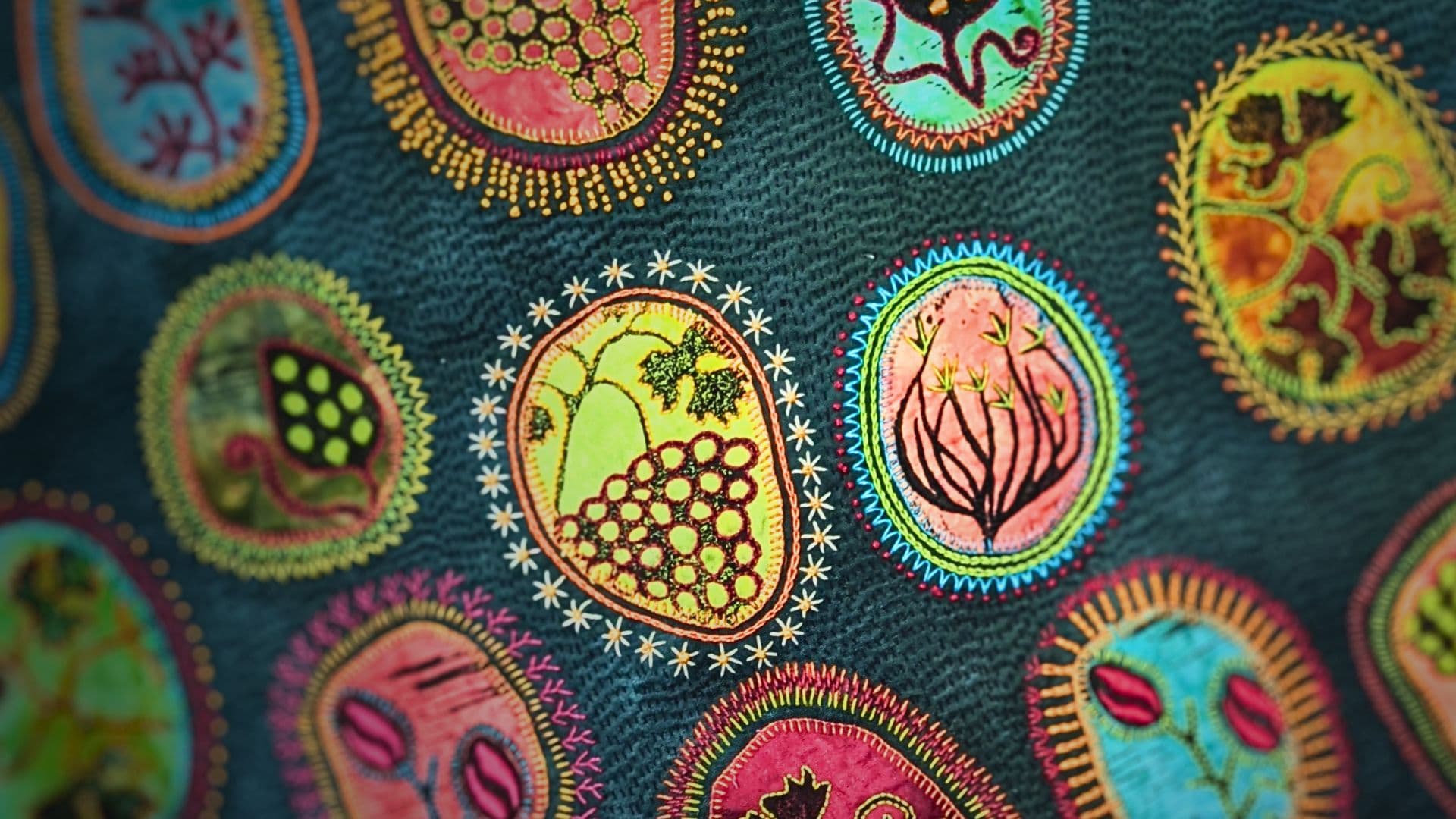
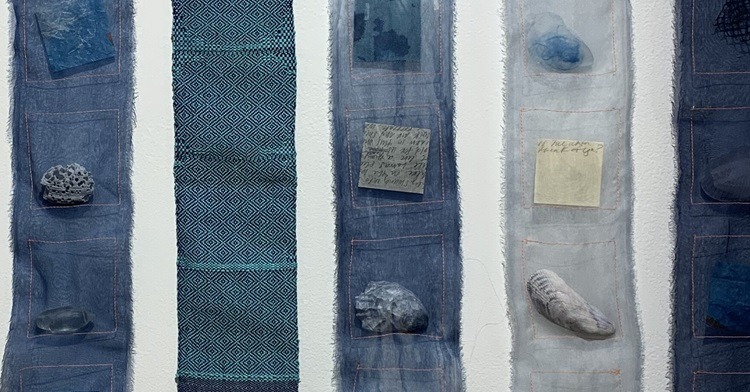
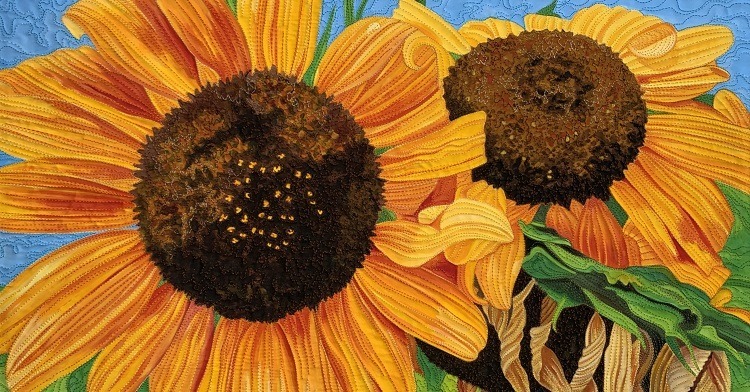
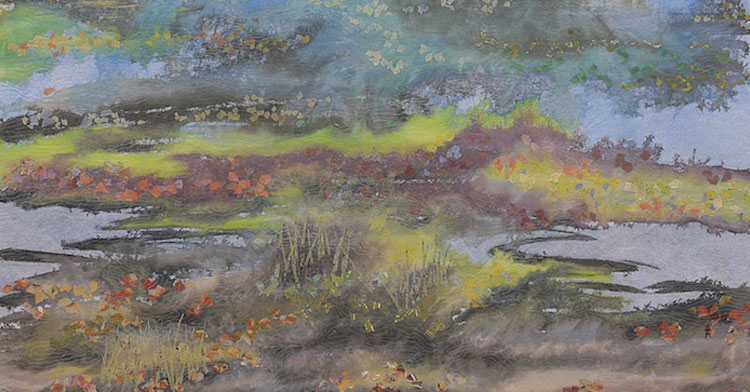
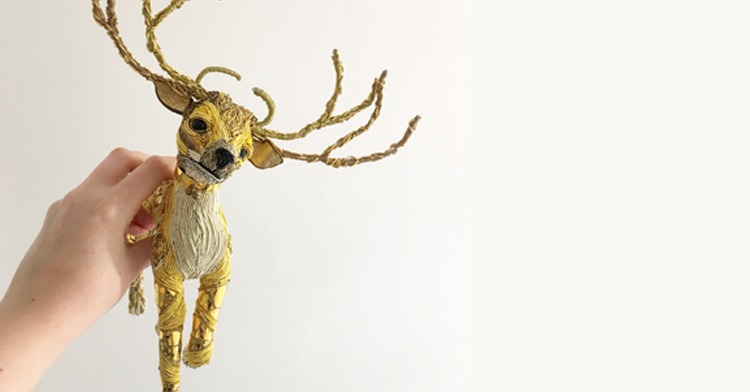
Comments